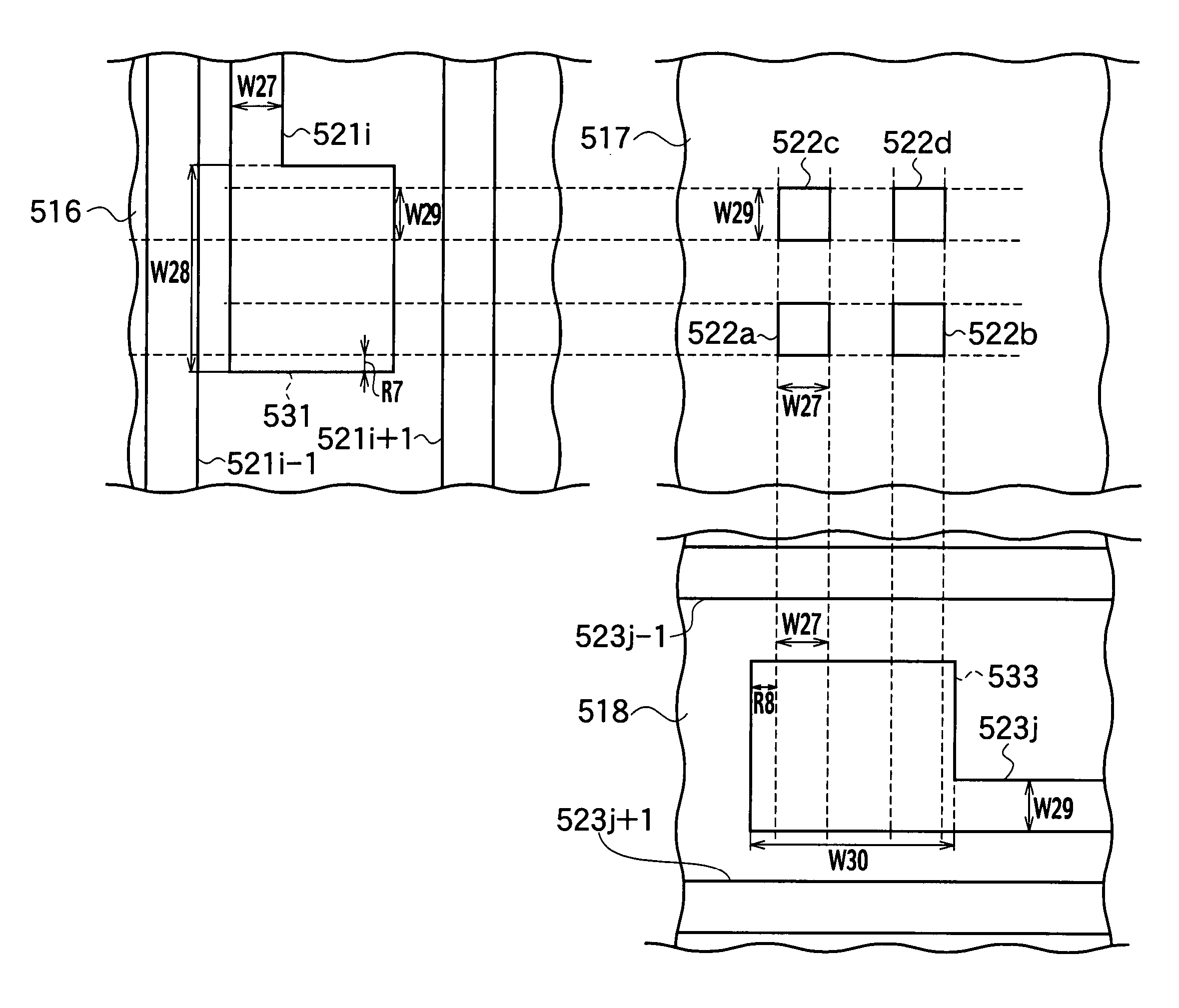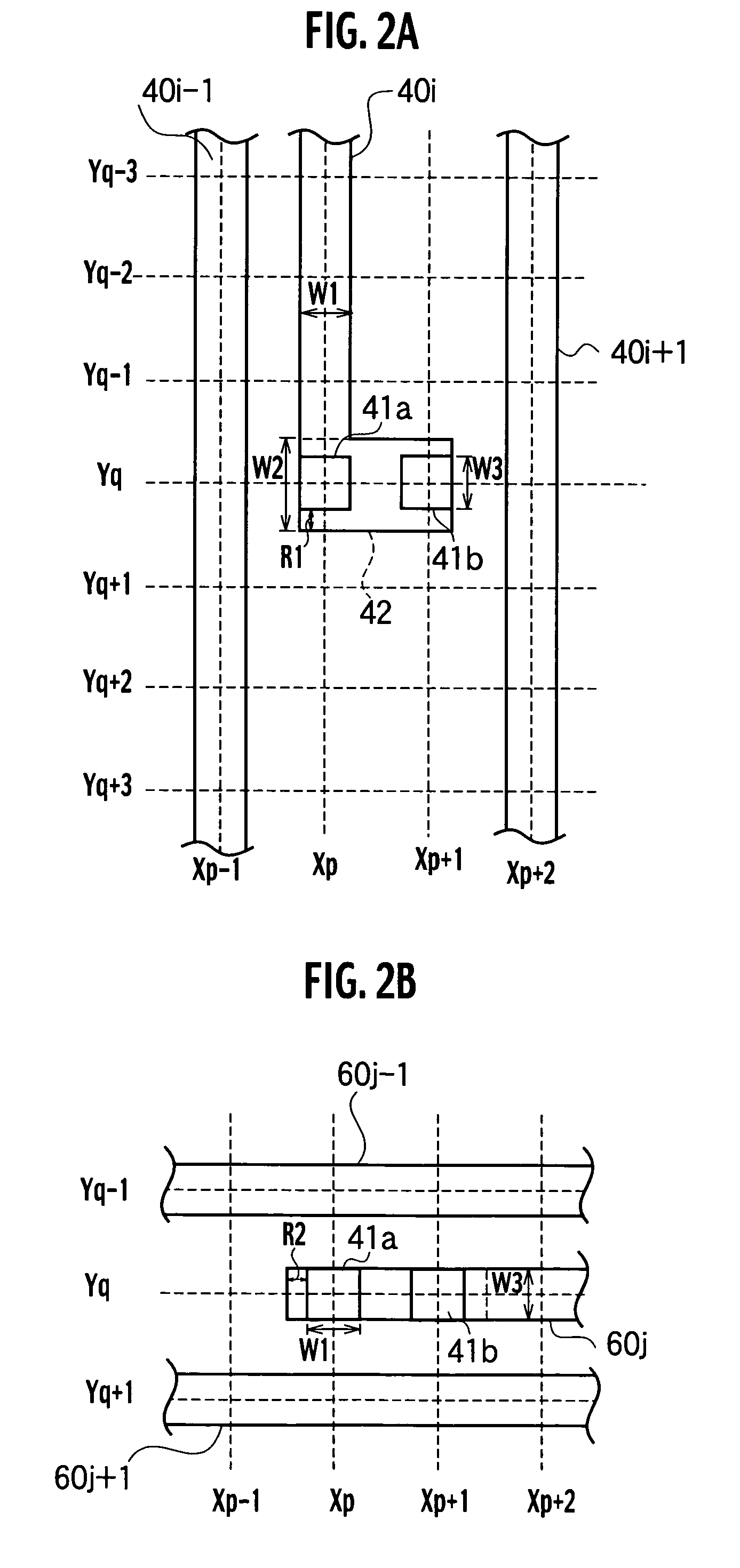CAD method for arranging via-holes, a CAD tool, photomasks produced by the CAD method, a semiconductor integrated circuit manufactured with photomasks and a computer program product for executing the CAD method
a cad method and via-hole technology, applied in the field of computer-aided design (cad) methods, can solve the problems of defective connection generation, wiring failure such as disconnection, and difficulty in establishing the geometry of metallic wiring configured to interconnect circuit elements as designed
- Summary
- Abstract
- Description
- Claims
- Application Information
AI Technical Summary
Benefits of technology
Problems solved by technology
Method used
Image
Examples
first embodiment
[0053]As shown in FIG. 1A, a designing tool according to a first embodiment of the present invention includes a central processing unit (CPU) 2, a data memory 3, an input unit 11, an output unit 12 and a main memory 13.
[0054]As shown in FIG. 2A and FIG. 2B, the CPU 2 executes the processing of the designing tool on the basis of wiring grids which are implemented by a plurality of regularly spaced first lines Xp−1, Xp, Xp+1, . . . , each of which runs in parallel along a fixed direction (vertical direction) and by a plurality of regularly spaced second lines Yq−1, Yq, Yq+1, . . . , each of which runs in parallel along such a direction (horizontal direction) as intersects orthogonally to the regularly spaced first lines Xp−1, Xp, Xp+1, . . . (“p” and “q” are integers, respectively). Therefore, the CPU 2 encompasses a condition setting module 4 configured to set the wiring condition of specific wiring level, a first level layout module 5 configured to layout the first wiring level, a s...
second embodiment
[0133]As already shown in the common block diagram of FIG. 1A, a designing tool according to a second embodiment of the present invention includes a central processing unit (CPU) 2, a data memory 3, an input unit 11, an output unit 12 and a main memory 13. Herein, only features different from the designing tool according to the first embodiment are mainly described, while the features which are equivalent to those appearing in the first embodiment, are omitted since they are substantially similar.
[0134]As shown in FIG. 10A, the k-th level interconnect setting logic 21a shown in FIG. 1B, designs layouts of a first strip pattern 240i−1 of the k-th wiring level, a second strip pattern 240i of the k-th wiring level and a third strip pattern 240i+1 the k-th wiring level which extend in the k-th wiring level along the k-th level priority direction.
[0135]The k-th level extension setting logic 21b generates a pattern of a k-th level extension 242 extending in a direction intersecting slanti...
third embodiment
[0176]As already shown in the common block diagram of FIG. 1A, a designing tool according to a third embodiment of the present invention includes a central processing unit (CPU) 2, a data memory 3, an input unit 11, an output unit 12 and a main memory 13. Herein, only features different from the designing tool according to the first embodiment, are mainly described, while the features which are overlapped with the first embodiment are omitted since they are substantially similar.
[0177]As shown in FIG. 13A, the k-th level interconnect setting logic 21a shown in FIG. 1B, designs layouts of a first strip pattern 440i−1 of the k-th wiring level, a second strip pattern 440i of the k-th wiring level and a third strip pattern 440i+1 of the k-th wiring level which extend in the k-th wiring level along the k-th level priority direction.
[0178]The k-th level extension setting logic 21b generates a pattern of a k-th level extension 442 extending in an orthogonal direction to the k-th level prio...
PUM
| Property | Measurement | Unit |
|---|---|---|
| thickness | aaaaa | aaaaa |
| thickness | aaaaa | aaaaa |
| width | aaaaa | aaaaa |
Abstract
Description
Claims
Application Information
 Login to View More
Login to View More - R&D
- Intellectual Property
- Life Sciences
- Materials
- Tech Scout
- Unparalleled Data Quality
- Higher Quality Content
- 60% Fewer Hallucinations
Browse by: Latest US Patents, China's latest patents, Technical Efficacy Thesaurus, Application Domain, Technology Topic, Popular Technical Reports.
© 2025 PatSnap. All rights reserved.Legal|Privacy policy|Modern Slavery Act Transparency Statement|Sitemap|About US| Contact US: help@patsnap.com



